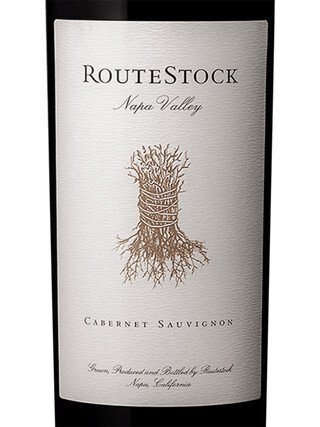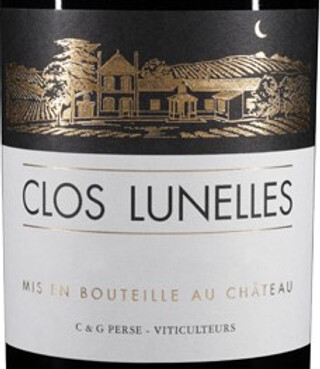Jun 10th 2025
What Makes Cabernet Franc a Collector’s Secret Weapon?
If you are like us, your wine rack is about more than storage, it's a narrative. There are stars like Pinot Noir and Cabernet Sauvignon that tend to hog the limelight, but there's one variety that's gaining admiration from collectors and sommeliers alike: Cabernet Franc.
At Woodland Hills Wine Company (WHWC), we’ve seen a growing interest in this historic, under-the-radar grape. Let’s explore why now’s the perfect time to discover what makes Cabernet Franc a secret weapon for wine lovers.
What is Cabernet Franc: A Grape With Deep Roots
What is Cabernet Franc? While it seldom tops wine menus, Cabernet Franc has ancient roots. It originated in Bordeaux and the Loire Valley and is the parent variety of Cabernet Sauvignon. In regions such as Chinon and Saumur, it excels on its own, lighter, earthier, and frequently characterized by hints of pencil shavings or graphite.
Long used in blends for its lift, Cabernet Franc is finally having its time in the sun as a standalone varietal, and it's ripe for the taking.
Tasting Cabernet Franc: A Distinctive Flavor Profile
Cabernet Franc's flavor profile is complex and evocative but never overwhelming. Here's what we and many collectors adore about it:
This wine is all about nuance and balance. Here's what shines through:
- Red fruits: Raspberry, red currant, strawberry
- Herbaceous hints: Thyme, mint, green pepper
- Floral notes: Violet, rose
- Minerality: Pencil lead, graphite
- Subtle spice: Tobacco, white pepper, cedar
Refined but rustic, Cabernet Franc provides a depth of flavor without getting overbearing, ideal for collectors who adore exploring regional and vintage variation.

Aleanna Cabernet Franc Uco Valley El Enemigo 2021
Cabernet Franc from Uco Valley, Mendoza, Argentina

Grand-Puy Ducasse Pauillac 2022
Cabernet/Bordeaux Blends from Pauillac, Left Bank, Bordeaux, France

Pédesclaux Pauillac 2018
Cabernet/Bordeaux Blends from Pauillac, Left Bank, Bordeaux, France
Why Sommeliers and Collectors Are Turning to Cabernet Franc
We’ve seen firsthand how Cabernet Franc is catching the eye of those in the know. Why? It offers something unique, depth, and character without being overly tannic or fruit-forward.
- Style Versatility: From lean and earthy to rich and spicy, there’s a bottle for every mood.
- Food-Friendly: Lower tannins and bright acidity make it easy to pair with a range of dishes.
- Great Value: Generally cheaper than Cabernet Sauvignon, particularly from the Loire, Chile, and Argentina.
- Ages Beautifully: Develops smoky, earthy complexity with age, perfect for aging and observing it mature.

Cabernet Franc vs Cabernet Sauvignon: Key Differences
What's the difference between Cabernet Franc vs Cabernet Sauvignon?
Let's break it down.
|
Feature |
Cabernet Franc |
Cabernet Sauvignon |
|
Parentage |
Parent grape (crossed with Sauvignon Blanc) |
Offspring |
|
Tannins |
Softer, more approachable |
Firmer and more structured |
|
Acidity |
Higher acidity |
Moderate acidity |
|
Aromas |
Red fruit, herbs, graphite, florals |
Black fruit, cassis, oak, spice |
|
Climate Preference |
Does well in cooler areas |
Likes warmer, sunnier weather |
|
Ripening Time |
Earlier ripening |
Later ripening |
These are the key differences between Cabernet Franc vs Cabernet Sauvignon.
So, when do you use one over the other? Cabernet Sauvignon is your choice for power, structure, and richness. But when you need elegance, freshness, and complexity, particularly with food, Cabernet Franc is usually the winner.
Why Cabernet Franc Is the Connoisseur’s Choice
At WHWC, we think that one of the joys of wine collecting is discovering sleeper winners, the varieties that have yet to become mainstream but pay off for those willing to take the chance. Cabernet Franc is precisely that type of grape.
Under-the-Radar Value
A lot of bottles go under the radar in terms of price, even from esteemed regions. You can have a varied vertical (same wine vintage to vintage) or horizontal (different producers/sources in the same vintage) collection without spending a fortune.
Cellar-Worthy Aging Potential
Don't be fooled by its ethereal aromas. Cabernet Franc is an aging material. As the years pass, its red fruit darkens, its herbal flavors become savory, and its structure softens to silky perfection.
Food-Pairing Powerhouse
More on that below, but believe us, Cabernet Franc is heaven-made with herb-flavored foods, lean proteins, and earthy vegetables.
From Background to Center Stage
Historically, a Bordeaux blending grape, it's now holding its own as a single varietal. This trend is allowing producers to innovate, and collectors to acquire unique wines that showcase terroir like few others.

The Best Regions for Cabernet Franc
Where your Cabernet Franc originates makes all the difference. Here are some of the most important areas to consider:
Loire Valley, France
- Notable areas: Chinon, Saumur, Bourgueil
- Style: Earthy, mineral, lean body
- Aging: 5–15 years
Bordeaux Right Bank
- Role: Blended with Merlot in Saint-Émilion and Pomerol
- Impact: Contributes lift, florals, and acidity to Merlot's lusciousness
Napa Valley, California
- Style: Darker, more structured with dark fruit and spice
- Great picks: Seek out small-lot makers specializing in single-varietal Cab Franc
- Tip: WHWC frequently receives exceptional Napa Cab Francs, watch our new arrivals section.
Argentina & Chile
- Style: Full-bodied, aromatic, juicy
- Regions to watch: Mendoza (Argentina), Maipo and Colchagua (Chile)
- Why it matters: Vineyards at high elevations offer freshness and complexity
Other Notables
- Italy (Friuli, Tuscany): Frequently part of "Super Tuscan" blends
- United States (Finger Lakes, Virginia): Cool climate sites that hold a lot of potential
With Cabernet Franc, terroir is everything. Wine from Chinon will be completely different from wine from Napa or Mendoza, even if they're made from the same grape.
Perfect Pairings: What to Eat with Cabernet Franc
Few wines complement food as well as Cabernet Franc. Its herbal nuances and crisp acidity make it extremely versatile.
Old World Style (Loire Valley)
- Pair with: Roast chicken with thyme, mushroom risotto, and lentil stew.
- Why it works: Earthy flavors complement the wine's minerality and herbal notes.
New World Style (Napa, Argentina)
- Pair with: Grilled lamb, duck breast, and BBQ ribs.
- Why it works: Fruit-forward styles hold their own against bold, meaty foods.
Versatile Pairings
- Herbed vegetables (roasted carrots, Brussels sprouts)
- Tomato-based sauces (ratatouille, pasta arrabbiata)
Yes, even a high-end bottle of Cabernet Franc can elevate a casual night with takeout from your favorite burger spot. We’ve tried it and trust us, it’s a match.
Find Your Next Cabernet Franc at Woodland Hills Wine Company
We’re proud to offer a curated selection of Cabernet Franc wines from top regions around the world. Whether you’re a collector searching for cellar-worthy vintages or a curious sipper ready to branch out from Cabernet Sauvignon, we’re here to help.
Check out our current inventory on our website! Cheers to finding your new favorite grape.
Related Products

Leeuwin Cabernet Sauvignon Margaret River Art Series 2021
Cabernet Sauvignon from Margaret River, Western Australia, Australia

Bezel (Cakebread) Cabernet Sauvignon Paso Robles 2022
Cabernet Sauvignon from Paso Robles, Central Coast, California






